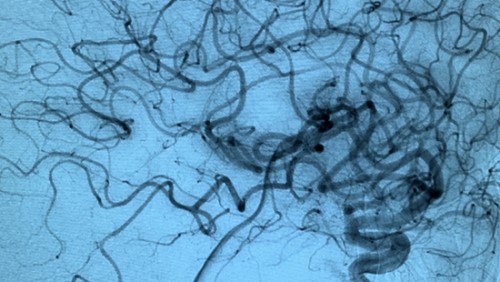Neurosurgery Clinical Trials

For more information on the studies below, or to find out if you’d be an ideal candidate for a study, please contact Kaitlyn Henry, Clinical Research Supervisor, at 410-328-0939 or by email at khenry@som.umaryland.edu.
You may also click each link to be directed to the ClinicalTrails.gov for additional study details.
Focused Ultrasound (FUS) Studies
Movement & Pain Disorders
ET005 – Bilateral FUS Treatment of Medication Refractory Essential Tremor
The purpose of this study is to see if the MR-guided focused ultrasound (MRgFUS) thalamotomy procedure can be performed on both sides of the brain safely and effectively to reduce bilateral tremor. Eligible patients will include those who have previously undergone an Exablate procedure in a clinical trial or in a commercial setting at least 9 months prior to enrolling in this trial
PD006 – FUS for Medically – Refractory Dyskinesia of PD
This study will evaluate the safety and efficacy of unilateral focused ultrasound pallidotomy using the ExAblate 4000 System in the management of dyskinesia symptoms or motor fluctuations for medication refractory, advanced idiopathic Parkinson's disease.
Neuropathic Pain – FUS for treatment of Neuropathic Pain
The primary purpose of this study is to assess the safety of MR-guided focused ultrasound (MRgFUS) in patients with chronic neuropathic pain whose medicines are not working well.
Brain Tumors
This study is designed to assess the safety and feasibility of using the ExAblate, Type 2 to temporarily disrupt the blood brain barrier in non-enhancing suspected infiltrating glioma. The ExAblate Model 4000 Type-2 is intended for use as a tool to disrupt the blood brain barrier.
Eligible patients will include those with suspected infiltrating glioma on pre-operative brain imaging who will undergo a planned surgical resection
The purpose of this study is to evaluate the safety of the ExAblate Model 4000 Type 2 used as a tool to disrupt the BBB (blood brain barrier) in patients with high grade glioma undergoing standard of care therapy.
Eligible patients will include those who with a Grade IV glioma and eligible for temozolomide (TMZ) treatment based on current standard of care.
The purpose of this study is to evaluate the safety and feasibility of the Exablate Model 4000 Type 2 system when used as a tool to open the blood-brain-barrier (BBB) in subjects with recurrent glioblastoma (rGBM) undergoing carboplatin monotherapy.
Eligible patients will include those with a histologically confirmed glioblastoma with tumor progression after first line chemo radiation, and who are planned for Carboplatin monotherapy.
Acute Studies
Clazosentan to Evaluate Its Effects on Preventing Complications Due to the Narrowing of the Blood Vessels (Vasospasm) in the Brain, Caused by Bleeding Onto the Surface of the Brain (REACT)
This study will evaluate if clazosentan (on top of normal routine medical care) can reduce the risk of developing complications related to cerebral vasospasm and permanent brain damage as compared to normal routine medical care alone.
The purpose of this study is to examine the efficacy, safety, and tolerability of BAF312, a drug that could potentially limit brain inflammation after intracerebral hemorrhage (ICH), and thereby improve neurological outcome for hemorrhagic stroke patients.
Trauma Studies
The aim of this study is to evaluate efficacy and safety of riluzole in the treatment of patients with acute spinal cord injury within the first 12 hours after injury, with the hypothesis being that riluzole treated subjects will experience superior motor, sensory, functional, and quality of life outcomes as compared to those receiving placebo.
Eligible subjects include those with ISNCSCI impairment Scale Grade of "A", "B" or "C" and can receive the investigational drug within 12 hours of injury
The NACTN Spinal Cord Injury Registry is a network of clinical centers collecting de-identified data from patients admitted through the Emergency Department of a NACTN center at the time of injury with an initial (first time) spinal cord injury (SCI). No intervention is given other than standard of care for spinal cord injury.
